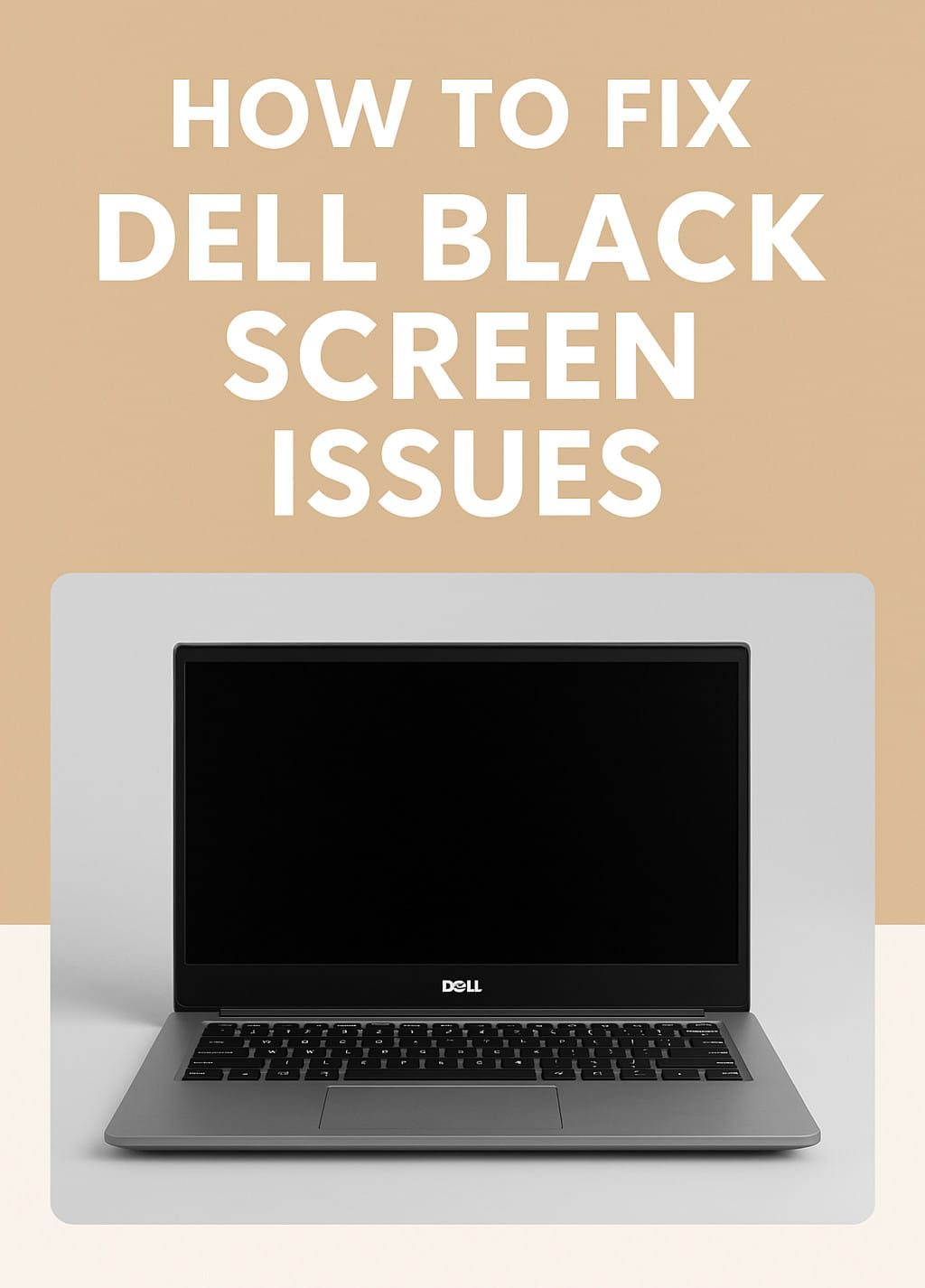Dell computers are widely known for their reliability, but encountering a black screen can be both frustrating and concerning. Whether you’re using a Dell laptop or desktop, a black screen issue can occur due to various reasons, ranging from hardware malfunctions to software glitches. In this in-depth guide, we will cover all possible causes and solutions to help you fix the Dell computer black screen issue efficiently.
Understanding the Dell Black Screen Issue
Before diving into the troubleshooting steps, it’s essential to understand what might be causing the problem. A black screen on a Dell computer can be attributed to multiple factors, including:
- Software Issues: A corrupted Windows update or faulty application may lead to a black screen.
- Hardware Problems: Issues with the display, graphics card, or RAM can cause the screen to go black.
- Overheating: Excessive heat buildup can result in automatic shutdowns or screen malfunctions.
- Loose or Damaged Connections: Faulty cables or ports may cause display issues.
- BIOS or Driver Corruption: Outdated firmware or graphics drivers could contribute to the problem.
- Power Supply Issues: A failing power adapter or battery can affect screen functionality.
- Malware or Virus Attacks: Harmful software may interfere with system files, causing display errors.
With this understanding, let’s explore the most effective troubleshooting solutions to restore your Dell computer’s display.
Basic Troubleshooting Steps
1. Restart Your Dell Computer
One of the simplest yet effective fixes is restarting your system. Here’s how to do it properly:
- Press and hold the power button for about 10 seconds until the computer turns off.
- Unplug the power adapter (for desktops) or remove the battery (for laptops, if possible).
- Wait for 30 seconds before reconnecting the power source.
- Turn the computer back on and check if the black screen issue is resolved.
2. Check Display Connections (For Dell Desktops)
For desktop users, display issues may be caused by a loose or faulty connection. Here’s how to check:
- Ensure the monitor is correctly connected to the CPU.
- Inspect cables for any signs of wear or damage.
- Try using a different HDMI, VGA, or DisplayPort cable.
- Test the monitor with another computer to see if the issue persists.
3. Boot Into Safe Mode
If your Dell computer is stuck on a black screen but still running, Safe Mode can help diagnose the issue:
- Turn off your computer completely.
- Press the power button to turn it on and immediately start pressing
F8orShift + F8repeatedly. - From the Advanced Boot Options menu, select Safe Mode.
- If Safe Mode loads successfully, update your graphics driver and uninstall any recent software that may be causing the problem.
Advanced Solutions to Fix the Black Screen Issue
4. Perform a Hard Reset (For Dell Laptops)
If your Dell laptop has a black screen but is still running, a hard reset might solve the problem:
- Shut down your laptop and disconnect all external devices.
- If possible, remove the battery and unplug the power adapter.
- Press and hold the power button for 30 seconds to drain any residual power.
- Reinsert the battery and reconnect the power adapter.
- Power on the laptop and check if the issue is resolved.
5. Update or Reinstall Graphics Drivers
Outdated or corrupted graphics drivers can cause display issues. Here’s how to update them:
- Boot into Safe Mode (as described in Step 3).
- Press
Win + Xand select Device Manager. - Expand Display Adapters and right-click on your graphics card.
- Click Update Driver and choose Search Automatically for Updated Driver Software.
- If updating doesn’t work, right-click the driver and select Uninstall. Restart your computer, and Windows should reinstall the necessary drivers automatically.
6. Reset BIOS to Default Settings
A corrupted BIOS can cause the screen to go black. Resetting BIOS may help:
- Restart your computer and press
F2orDelto enter the BIOS setup. - Look for the Reset to Default or Load Optimized Defaults option.
- Save the changes and exit the BIOS setup.
- Restart your computer to see if the issue is resolved.
7. Check for Overheating Issues
Excessive heat can cause the screen to go black or shut down unexpectedly. Follow these steps:
- Clean your system’s vents and fans using compressed air.
- Ensure your cooling system (fans, heat sinks) is functioning properly.
- Avoid placing your laptop on soft surfaces that block airflow.
- If needed, apply fresh thermal paste to the CPU.
Additional Fixes for Persistent Black Screen Problems
8. Run a Virus and Malware Scan
Malware infections can interfere with system files, leading to a black screen issue. To scan your system:
- Boot into Safe Mode with Networking.
- Download and install a reliable antivirus program.
- Perform a full system scan and remove any detected threats.
- Restart your computer and check if the black screen issue is resolved.
9. Perform a System Restore
If the issue began after a recent update or software installation, performing a system restore might help:
- Boot into Safe Mode.
- Open the Control Panel and navigate to Recovery.
- Click on Open System Restore.
- Choose a restore point before the problem started and follow the prompts to restore your system.
10. Inspect and Replace RAM Modules
Faulty RAM can cause display problems. Here’s how to check and replace RAM:
- Power off the computer and unplug all cables.
- Open the back panel (for laptops) or the case (for desktops).
- Locate the RAM modules and remove them one at a time.
- Reinsert them securely or try replacing them with new RAM sticks.
- Restart your computer to see if the issue is resolved.
11. Reinstall Windows as a Last Resort
If nothing else works, reinstalling Windows might be necessary:
- Back up important files (if possible).
- Create a bootable USB drive with Windows installation media.
- Boot from the USB drive and follow the on-screen instructions to reinstall Windows.
Preventing Future Black Screen Issues
To avoid encountering this issue again, follow these best practices:
- Regularly update Windows and drivers.
- Keep your system clean and free from dust.
- Use a reliable power adapter and battery.
- Run frequent virus and malware scans.
- Avoid overloading your system with unnecessary software.
- Keep your cooling system in good condition.
Conclusion
A black screen issue on your Dell computer can be a major inconvenience, but with the right troubleshooting steps, you can fix it. Whether the problem is software-related or caused by hardware failure, the solutions provided in this guide will help you get your system back to normal. If none of the solutions work, contacting Dell Support for further assistance may be your best option.
If you found this guide helpful, share it with others who might be facing the same issue!

